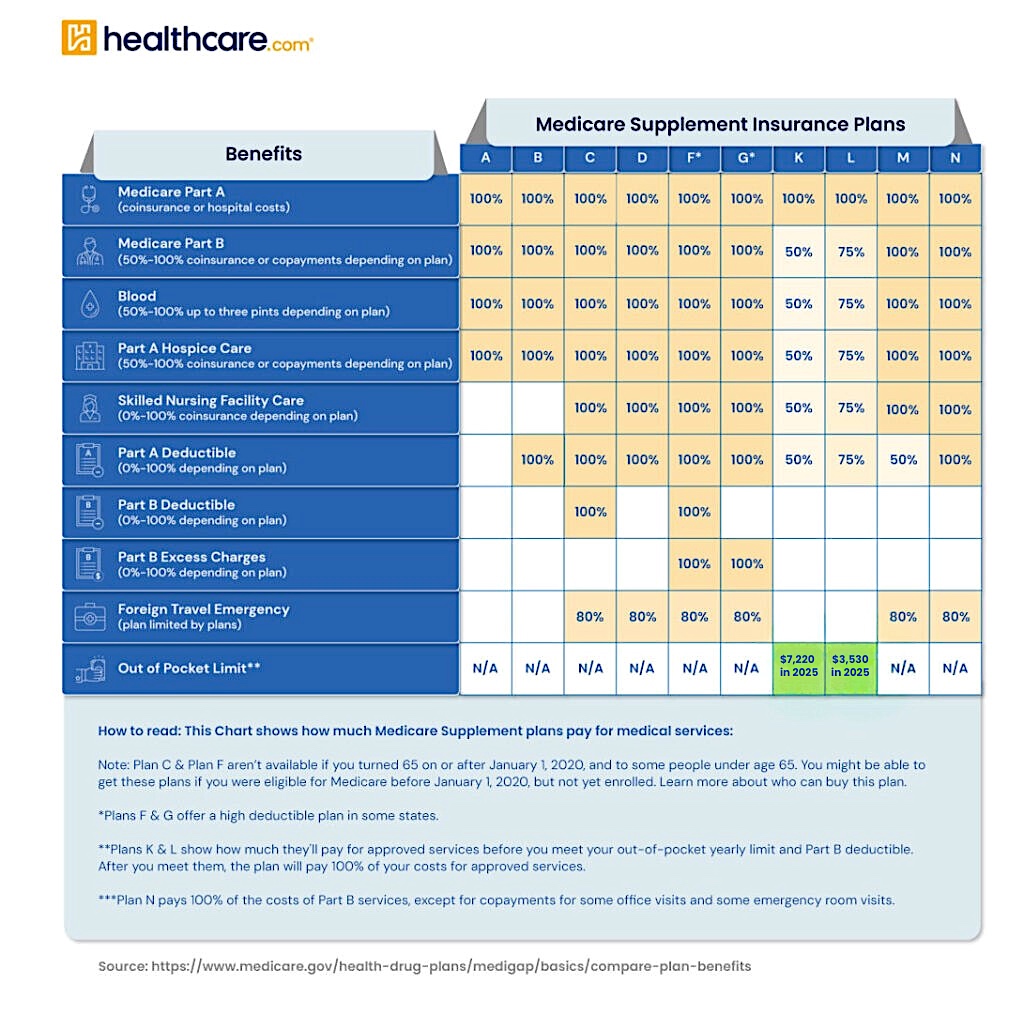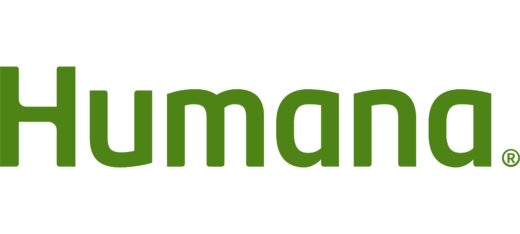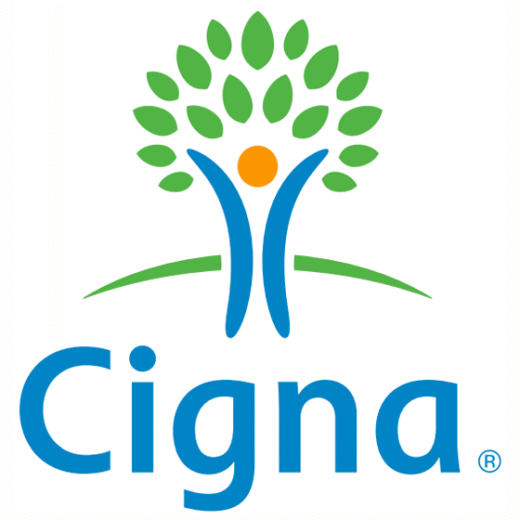Written by Sharon O'Day
HealthCare Writer
We aim to help you make informed healthcare decisions. While this post may contain links to lead generation forms, this won’t influence our writing. We follow strict editorial standards to give you the most accurate and unbiased information.
What You Need to Know
- Medicare Supplement plans, also known as Medigap, help pay for out-of-pocket costs not covered by Medicare Part A and Part B.
- South Dakota insurance companies must accept your Medicare Supplement (Medigap) plan application if you’re in your Medigap Open Enrollment Period or have guaranteed issue rights.
- The three most popular Medigap policies are typically Plans F, G, and N.
What Are Medicare Supplement Plans in South Dakota?
Medicare is a federal health insurance program for individuals aged 65 and older, as well as younger people with qualifying disabilities or health conditions (e.g., end-stage renal disease).
Original Medicare, which includes Part A (Hospital Insurance) and Part B (Medical Insurance), covers many healthcare services. However, it still leaves you with out-of-pocket costs like deductibles, coinsurance, and copayments. Medicare Supplement plans help pay for these expenses.
Medigap plans are standardized by letter (A through N). That means Plan A from one company offers the same benefits as Plan A from another, though premiums may differ. Learn how these plans work and how they benefit residents of South Dakota.
South Dakota allows residents under 65 who qualify for Medicare to purchase Medigap plans. State law prohibits insurers from charging these individuals more than someone who qualified for Medicare at age 65 and is now age 75. Once these members turn 65, they receive a new Medigap Open Enrollment Period.
South Dakota also offers Medigap Select, a managed-care version of Medigap. These plans offer lower premiums but require members to use in-network providers except during emergencies. Referrals may also be required. Two insurers, Avera Health and Sanford Health, currently offer Med Select plans.
Residents can also purchase cancer insurance alongside a Medigap policy, provided the cancer coverage pays benefits regardless of what Medicare covers.
Medigap policies are guaranteed renewable if you continue paying your premiums. They do not include Medicare Part D prescription drug coverage, so you’ll need a separate Part D plan for medications.
Get Quotes Matched to Your Budget and Needs
When Can You Enroll in a Medicare Supplement (Medigap) Policy?
You can apply for a Medigap plan at any time. However, outside of your Medigap Open Enrollment Period—or without guaranteed issue rights—insurers may use your health history to deny coverage or charge higher premiums.
Your Medigap Open Enrollment Period lasts for six months. It begins when you’re both age 65 (or older) and enrolled in Medicare Part B. During this time, insurance companies must offer you any plan they sell at standard rates, regardless of your health.
This is the ideal time to enroll because it gives you the widest choice of plans and the best rates.
Guaranteed issue rights may also apply in certain situations. For example, if your employer coverage ends or you’re switching out of a Medicare Advantage plan for the first time within 12 months, insurers must offer you a policy without regard to your health.
You might also qualify for a Special Enrollment Period, which gives you temporary guaranteed issue rights if your coverage changes or you lose your plan for reasons outside your control.
What Are the Most Popular Medicare Supplement Plans?
Nationwide, the most common Medigap plans are:
- Plan F – Offers the most comprehensive coverage, but is only available to those eligible for Medicare before January 1, 2020.
- Plan G – Covers almost everything Plan F does, except the Medicare Part B deductible.
- Plan N – Covers most major costs but has copayments for some doctor and ER visits, and does not cover Part B excess charges.
Each of these plans provides standardized coverage across all insurers, but availability and pricing may differ depending on the company.
How Do You Choose a Medicare Supplement Plan?
Decide on a plan letter (e.g., G or N) based on your healthcare needs and budget.
Explore plan options online or call a licensed insurance agent for guided assistance. Compare premiums for the same plan across insurers. The benefits are identical, but pricing differs due to:
- Attained age rating: Premiums increase as you age.
- Issue age rating: Premiums are based on your age when you first buy the plan.
- Community rating: Everyone pays the same premium regardless of age.
Always compare “apples to apples”—for example, Plan G with one insurer vs. Plan G with another.

How Much Do Medigap Policies Cost?
Medigap premiums in South Dakota vary based on:
- Your age and gender
- Tobacco use
- Plan type
- Pricing method used by the insurer
Get Quotes Matched to Your Budget and Needs
What If You Want to Change Your Medicare Supplement Plan?
You can apply to change Medigap policies at any time. But unless you have guaranteed issue rights, insurers may underwrite your application based on your health.
What Are Alternatives to Medicare Supplement Plans?
Medicare Advantage plans, also known as Part C, are an alternative to Original Medicare, offered by Medicare-approved private insurance companies.
These plans include Part A (hospital) and Part B (medical), and most also include Part D (prescription drug coverage). Many plans offer added benefits like routine dental, vision, hearing, and fitness programs.
Instead of buying a Medigap and a Part D plan separately, you may consider an all-in-one Medicare Advantage plan.
Learn more about South Dakota Medicare Advantage plans.
Medicare Part D
Medicare Part D plans offer standalone prescription drug coverage.
Who needs it: If you’re enrolled in Original Medicare (Parts A and/or B) and want drug coverage, you typically buy a separate Part D plan.
What it covers: Prescription medications. Coverage and cost vary by plan.
How it’s offered: Through private insurance companies approved by Medicare.
Not needed if: You’re enrolled in a Medicare Advantage plan that already includes drug coverage (MAPD).
Shop for a Medicare plan with additional benefits!
Do Medigap Plans Cover Prescription Drugs?
No. Medigap plans do not cover prescription drugs. You’ll need a separate Medicare Part D plan for that.
Medicare Resources in South Dakota
Residents of South Dakota can get free, personalized help through the following programs:
- Senior Health Information and Insurance Education (SHIINE): A federally funded counseling program that helps residents understand Medicare coverage and options. Call (800) 536-8197 (Eastern SD), (877) 331-4834 (Central SD), or (877) 286-9072 (Western SD).
- South Dakota Division of Insurance: Offers consumer protections and oversight of Medigap insurers. Call (605) 773-3563.
- South Dakota Medicaid Program: Administered by the Department of Social Services. It assists low-income individuals with health coverage and coordinates benefits with Medicare. For more information, call (800) 772-1213.
Next Steps
If a Medicare Supplement plan in South Dakota fits your needs, take the next step by comparing plans available in your area. You can browse options online or connect with a licensed insurance agent for expert guidance and personalized support.
Thank you for your feedback!
Administrative Rules. sdlegislature.gov. Accessed June 22, 2021.
South Dakota Consumer’s Guide to Medicare Supplement Policies – Year 2020. shiine.net. Accessed June 22, 2021.
The State of Medicare Supplement Coverage: Trends in Enrollment and Demographics. ahip.org. Accessed June 22, 2021.
South Dakota Consumer’s Guide to Medicare Supplement Policies – Year 2020.
Medicare Supplement Policies. dlr.sd.gov. Accessed June 22, 2021.
Guaranteed issue rights. medicare.gov. Accessed June 22, 2021.
The State of Medicare Supplement Coverage. ahip.org. Accessed October 2, 2021.
How to compare Medigap policies. medicare.gov. Accessed June 22, 2021.
Costs of Medigap policies. medicare.gov. Accessed June 22, 2021.
Supplement Insurance (Medigap) plans in South Dakota. medicare.gov. Accessed October 21, 2021.
Supplement Insurance (Medigap) plans in South Dakota
Switching Medigap policies. medicare.gov. Accessed June 22, 2021.
Medicare Recipients. dss.sd.gov. Accessed June 22, 2021.








